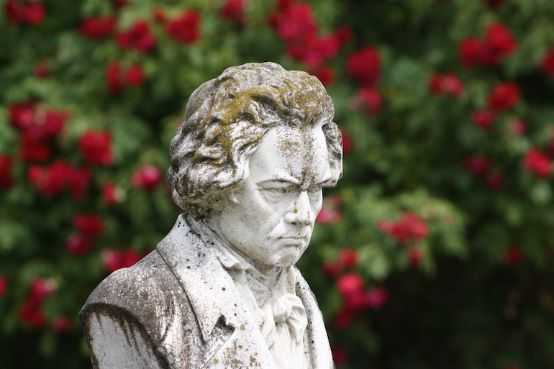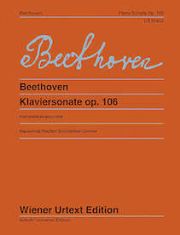Controversial tempos to this day
There are contradictory first editions of Beethoven's Piano Sonata op. 106 and the metronome markings remain a mystery to this day.

"In terms of scope and structure, the Hammerklavier Sonata goes far beyond anything that has ever been dared and mastered in the field of sonata composition," wrote Alfred Brendel about Beethoven's Opus 106. And Beethoven himself said to his publisher: "Here you have a sonata that will give pianists a hard time, one that will be played in fifty years' time." Did he have any idea that it would still be a huge challenge for players and listeners two hundred years from now?
The Wiener Urtext-Edition has just published this monumental work as an exemplary single edition. (One of the few available, by the way.) This is no easy task either: there are no autographs or copies of the Hammerklavier Sonata, but various first editions that contradict each other in fundamental respects. The London first edition, for example, changes the order of the two middle movements, which Beethoven at least approved of. Other differences result from subsequent corrections and additions. For example, the reading of the accidentals remains ambiguous or even uncertain in some places. Last but not least, there is the controversial question of the correct tempi.
Beethoven only provided this one piano sonata with metronome markings. And they really pack a punch! Especially for the first movement, but also for the final fugue, this results in an incredibly fast tempo.
Johann Sonnleitner has devoted a detailed section to this topic in the foreword to this new edition. He does not believe in this conventional implementation of metronome numbers and advocates an older, variable measuring method. You don't necessarily have to agree with Sonnleitner to find his approach exciting and worth reading. Incidentally, the same applies to Alexander Jenner's fingerings.
One of the first to believe in these fast tempi and to attempt to realize them was Artur Schnabel, who recorded the Hammerklavier Sonata in 1935 as part of his complete recording. He did not succeed in everything comme il faut, which was certainly also due to the limited correction possibilities at the time. But his artistic impetus and the sound (!) are still very impressive. Those who prefer a more moderate and transparent interpretation will certainly like Alfred Brendel's versions. He has devoted his entire life as a pianist to this work. There are surprisingly few recordings by women: We would like to make special mention of Maria Grinberg, a great Soviet pianist who recorded all 32 of Beethoven's piano sonatas for Melodija in the 1960s.
Ludwig van Beethoven: Piano Sonata op. 106, Great Sonata for the Hammerklavier, edited by Peter Hauschild, revised by Jochen Reutter, notes by Johann Sonnleitner, UT 50432, € 10.95, Wiener Urtext Edition, Schott/Universal Edition 2018








